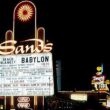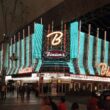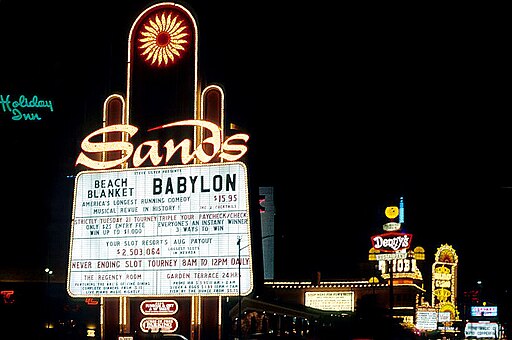Did you know that the history of comedy clubs in Las Vegas stretches back to the 1940s, when Rat Pack legends like Frank Sinatra and Dean Martin blended sharp wit with musical performances to captivate audiences in the city’s earliest showrooms? This vibrant legacy has evolved into a thriving comedy scene, with iconic venues like the Comedy Cellar and Brad Garrett’s Comedy Club continuing to draw laughter-loving crowds. Las Vegas, often celebrated for its casinos and spectacle-driven entertainment, has nurtured a unique comedy culture that reflects its showbiz roots while embracing modern comedic styles. This article traces the journey of comedy clubs in Las Vegas, from their origins in the glamorous mid-20th century to their current status as must-visit destinations for locals and tourists alike, exploring key milestones, influential figures, and the factors that have shaped this dynamic scene.
The Early Days: Comedy in Las Vegas’s Golden Age
Las Vegas’s comedy scene began to take shape in the 1940s and 1950s, during the city’s emergence as a global entertainment capital. The post-World War II boom brought tourists to the desert, eager for glamour and excitement. Hotels like the Sands, the Flamingo, and the Sahara capitalized on this demand, offering lavish showrooms that featured a mix of music, dance, and comedy. Unlike today’s dedicated comedy clubs, these early venues integrated humor into broader variety shows, with comedians serving as emcees or supporting acts for headlining musicians.
The Rat Pack—Frank Sinatra, Dean Martin, Sammy Davis Jr., Joey Bishop, and Peter Lawford—epitomized this era’s comedic style. Performing at the Sands’ Copa Room in the 1960s, their shows combined crooning with spontaneous banter, often poking fun at each other or the audience in a way that felt intimate despite the large crowds. Their humor, infused with a mix of charm and irreverence, set a precedent for Las Vegas’s comedy culture, where performers were expected to engage directly with audiences. Other comedians, such as Don Rickles, known for his insult comedy, also thrived in these showrooms, delivering sharp, boundary-pushing humor that resonated with the city’s bold atmosphere.
While these performances were not held in standalone comedy clubs, they laid the groundwork for the genre’s popularity in Las Vegas. The showrooms’ success demonstrated that comedy could draw crowds, paving the way for more specialized venues. However, the focus remained on big-name entertainers, and smaller, dedicated comedy clubs were yet to emerge.
The 1970s and 1980s: The Rise of Dedicated Comedy Clubs
The 1970s marked a shift in Las Vegas’s entertainment landscape, as the city began to diversify its offerings beyond traditional showrooms. The rise of stand-up comedy as a mainstream art form, fueled by television shows like The Tonight Show Starring Johnny Carson and comedy specials on HBO, created demand for dedicated comedy venues. Las Vegas, with its captive audience of tourists, was a natural fit for this trend.
One of the earliest comedy clubs in Las Vegas was the Comedy Store, which opened a satellite location at the Dunes Hotel in the late 1970s. Founded by Mitzi Shore in Los Angeles, the Comedy Store brought a new format to Las Vegas: a showcase-style club featuring multiple comedians performing short sets. This differed from the showroom model, where a single headliner dominated the stage. The Comedy Store’s Las Vegas outpost attracted rising stars like Sam Kinison and Roseanne Barr, offering a platform for edgier, more contemporary humor. Its intimate setting allowed comedians to experiment, honing material that would later propel them to national fame.
During this period, other venues began to embrace comedy as a standalone attraction. The Riviera Hotel’s comedy club, active in the 1980s, became a proving ground for comedians like Brad Garrett, who started his career as an opening act for legends like Frank Sinatra and Liza Minnelli. Garrett’s early experiences in Las Vegas shaped his comedic style, blending observational humor with a relatable everyman persona. His success highlighted the city’s growing role as a launchpad for comedic talent, even as it remained a destination for established stars.
The 1980s also saw the emergence of comedy as a competitive field in Las Vegas. Clubs like Catch a Rising Star, which opened at the MGM Grand (then the Marina Hotel), introduced a mix of local and touring comedians, fostering a sense of discovery for audiences. These venues were smaller than showrooms, creating a more personal experience where hecklers and crowd interactions became part of the show. This intimacy, combined with Las Vegas’s reputation for nightlife, attracted comedians seeking to test their material in a high-stakes environment.
The 1990s: Comedy Clubs Gain Prominence
The 1990s were a golden era for comedy clubs in Las Vegas, as the city solidified its status as a comedy hub. The economic boom of the decade, coupled with the expansion of mega-resorts like the Mirage, Bellagio, and Mandalay Bay, brought more tourists and increased demand for diverse entertainment. Comedy clubs proliferated, offering affordable alternatives to high-priced production shows.
The Improv at Harrah’s, which opened in the early 1990s, became one of the city’s most influential comedy venues. Modeled after the Improv chain founded by Budd Friedman in New York, the Las Vegas location featured a rotating lineup of comedians, from up-and-comers to household names like Ellen DeGeneres and Jerry Seinfeld. Its central Strip location made it accessible, and its reputation for quality acts drew consistent crowds. The Improv’s success underscored the viability of comedy clubs as standalone attractions, distinct from the variety shows of earlier decades.
Another key player was the Laugh Factory, which opened at the Tropicana in the late 1990s. Known for its Hollywood pedigree, the Laugh Factory brought a polished, professional vibe to Las Vegas, hosting comedians like Tim Allen and Dave Chappelle. Its intimate theater, with excellent sightlines, enhanced the audience experience, making it a favorite among comedy fans. The club’s commitment to showcasing diverse voices, including comedians from underrepresented backgrounds, helped broaden the appeal of comedy in Las Vegas.
During this period, Las Vegas also became a testing ground for comedians preparing for television specials or national tours. The city’s diverse audiences—spanning tourists from across the globe and locals with varied tastes—forced performers to refine their material for universal appeal. Comedians like Carrot Top, who began his long-running residency at the Luxor in 1996, leveraged Las Vegas’s unique environment to develop his prop-based comedy, which combined absurdity with sharp social commentary. His enduring presence in the city illustrates how comedy clubs and residencies began to coexist, offering different formats for comedic expression.
The 2000s: Modernization and Celebrity Influence
The early 2000s saw Las Vegas’s comedy scene evolve with the influence of celebrity comedians and the modernization of venues. The city’s comedy clubs began to reflect a blend of traditional stand-up and high-profile residencies, with stars like Jay Leno and Ray Romano performing in theaters while smaller clubs nurtured new talent.
Brad Garrett’s Comedy Club, opened in 2010 at the MGM Grand, marked a significant milestone. Garrett, a Las Vegas native who rose to fame on Everybody Loves Raymond, brought a personal touch to his club, curating lineups that balanced established acts with rising stars like Josh Sneed and Dave Landau. The club’s custom-built theater, designed specifically for comedy, offered superior acoustics and sightlines, setting a new standard for the genre. Garrett’s occasional performances added star power, and his hands-on approach—rooted in his early days performing in Las Vegas—made the club a standout. Its location on the Strip ensured accessibility, though its higher ticket prices reflected its premium status.
The L.A. Comedy Club, which began at the Palace Station in 2007 before moving to The STRAT, also played a pivotal role in the 2000s. Known for launching careers of comedians like Aziz Ansari and Loni Love, the club emphasized affordability with features like a $25 all-you-can-drink special. Its 270-seat Dragon Room, opened in the 2010s, improved the audience experience with better sightlines and sound, earning it multiple “Best of Las Vegas” awards from the Las Vegas Review-Journal. The club’s commitment to showcasing both local and national talent helped it carve out a niche in a competitive market.
The Comedy Cellar, which opened its Las Vegas location at the Rio Hotel in 2018, brought a New York sensibility to the city. Founded in 1982 in Manhattan, the Comedy Cellar is often called the “Harvard of comedy clubs” for launching stars like Chris Rock and Amy Schumer. Its Las Vegas outpost, an exact replica of the New York original, features a showcase format with five comedians per night, ensuring variety. The club’s reputation for surprise drop-ins by celebrities like Dave Chappelle and its media presence in shows like HBO’s Crashing and Jerry Seinfeld’s Comedian added cachet. Owned by Noam Dworman and booked by Estee Adoram, the Comedy Cellar has become a top destination, praised for its authentic comedy club vibe.
The 2010s: Diversification and Challenges
The 2010s brought both growth and challenges to Las Vegas’s comedy clubs. The rise of social media and streaming platforms like Netflix transformed comedy, with audiences seeking out comedians they discovered online. Clubs responded by booking performers with strong digital followings, such as Gabriel Iglesias and Iliza Shlesinger, while maintaining space for traditional stand-up.
Jimmy Kimmel’s Comedy Club, opened in 2019 at The LINQ Promenade, exemplified this modern approach. Curated by Las Vegas native Jimmy Kimmel, the two-level club combines a personal touch—featuring memorabilia from Kimmel’s career—with a diverse lineup, including Orny Adams and Josh Adam Meyers. Its “L8nite” Saturday shows, with tickets starting at $15, cater to budget-conscious locals, while its central location attracts tourists. The club’s design, with a spacious main room and a bar area, creates a raucous yet welcoming atmosphere, earning it the Las Vegas Review-Journal’s “Best Comedy Club” award.
Wiseguys Comedy Club, with locations in the Arts District and Town Square, emerged as a local favorite in the 2010s. Founded by Eric D. Snider, Wiseguys focuses on a cozy, community-driven experience, hosting touring comics and open mic nights. Its Friday night show, The Dirty at 12:30 at South Point, offers free admission and $4 drinks, making it a unique draw for comedy fans. Wiseguys’ emphasis on rising stars and its off-Strip locations have solidified its role as a hub for Las Vegas’s growing local comedy scene.
The decade also saw challenges, particularly with the COVID-19 pandemic in 2020. Comedy clubs, reliant on live audiences, faced closures and capacity restrictions. Venues like the L.A. Comedy Club and Delirious Comedy Club adapted by offering virtual shows and outdoor performances, while others, like the Improv at Harrah’s, closed permanently. The pandemic highlighted the resilience of Las Vegas’s comedy scene, as clubs pivoted to survive and reopened with renewed energy in 2021.
The 2020s: A New Era of Comedy
As of 2025, Las Vegas’s comedy clubs are thriving, blending tradition with innovation. The Comedy Cellar remains a leader, with its rotating lineup and celebrity drop-ins drawing packed houses. Brad Garrett’s Comedy Club continues to offer a premium experience, while the L.A. Comedy Club’s affordability and nightly shows make it a go-to for diverse audiences. Jimmy Kimmel’s Comedy Club has expanded its reach with themed nights and local talent showcases, reflecting Kimmel’s commitment to the city’s comedy culture.
Newer venues, like Drai’s Comedy Club at The Cromwell, launched in 2024, are pushing boundaries with high-production shows and diverse lineups. Drai’s, known for its nightlife expertise, aims to create an immersive comedy experience, blending humor with the luxury aesthetic of its nightclub and beach club. This venture signals a trend toward integrating comedy into broader entertainment ecosystems, appealing to younger audiences.
The Laugh Factory at the Tropicana and Delirious Comedy Club at the Downtown Grand also remain active, offering intimate settings and a mix of established and emerging comedians. The Laugh Factory’s history of hosting stars like Shayma Tash and its commitment to accessibility keep it relevant, while Delirious’s focus on local talent fosters a sense of community.
Comedy festivals, such as Skankfest and Laugh After Dark ComedyFest, have also gained traction, bringing sketch, improv, and stand-up to Las Vegas. These events, held at venues like Notoriety Live, showcase the city’s versatility as a comedy destination, attracting both performers and fans from across the country.
Factors Shaping the Comedy Club Scene
Several factors have influenced the evolution of comedy clubs in Las Vegas. The city’s tourism-driven economy ensures a constant influx of audiences, allowing clubs to experiment with varied lineups. The diversity of visitors—spanning different ages, cultures, and comedic tastes—has pushed comedians to craft universally appealing material, contributing to the scene’s vibrancy.
Competition among venues has driven innovation, with clubs investing in better facilities, like the custom theaters at Brad Garrett’s and Jimmy Kimmel’s. The rise of celebrity-owned clubs, such as those by Garrett and Kimmel, has added star power, while independent venues like Wiseguys maintain a grassroots appeal. The interplay between Strip and off-Strip clubs also creates a dynamic ecosystem, with the former catering to tourists and the latter serving locals.
Cultural shifts, including the demand for inclusive humor and sensitivity to social issues, have shaped comedic content. Comedians in Las Vegas navigate these expectations, balancing edgy humor with broad appeal. The city’s “Sin City” reputation allows for some leniency, but performers remain mindful of diverse audiences.
Tips for Experiencing Comedy Clubs in Las Vegas
To enjoy Las Vegas’s comedy clubs, consider these practical tips. First, book tickets in advance, especially for popular venues like the Comedy Cellar or Brad Garrett’s, as shows often sell out. Websites like Vegas.com or the clubs’ official pages offer deals and schedules. Second, arrive early to secure good seats, particularly in intimate venues like the Laugh Factory, where proximity enhances the experience.
Check age restrictions, as most clubs, such as Brad Garrett’s, are 21 and over due to adult humor and alcohol service. If seeking family-friendly options, look for shows like Potted Potter at Horseshoe Las Vegas, which combines improv and comedy. Be prepared for audience interaction, as many comedians engage with the crowd, especially in smaller clubs like Delirious.
Explore both Strip and off-Strip venues to get a full sense of the scene. The Comedy Cellar at the Rio offers a polished experience, while Wiseguys in the Arts District feels more local. Finally, follow clubs on social media for updates on surprise performances or special events, as drop-ins by stars like Ray Romano are common.
The Future of Comedy Clubs in Las Vegas
Looking ahead, Las Vegas’s comedy clubs are poised for continued growth. The city’s status as a global entertainment hub ensures a steady audience, while its proximity to Los Angeles attracts top talent. Emerging trends, such as hybrid shows blending comedy with music or magic, are likely to gain traction, as seen in performances like Laughternoon at The Orleans. Technology, including live-streamed shows and interactive apps, may also enhance the comedy experience, building on lessons from the pandemic.
The rise of comedy festivals and pop-up events suggests a move toward experiential entertainment, where audiences seek unique, memorable nights out. Clubs like Drai’s Comedy Club, with their focus on production value, could lead this shift, appealing to younger demographics. Meanwhile, the enduring appeal of traditional stand-up, as seen at the Comedy Cellar and L.A. Comedy Club, ensures that classic formats will remain a cornerstone.
Conclusion
The history of comedy clubs in Las Vegas is a story of evolution, from the Rat Pack’s showroom banter to the sophisticated venues of today. Beginning in the 1940s with variety shows, the scene grew through the 1970s and 1980s with dedicated clubs like the Comedy Store, flourished in the 1990s with the Improv and Laugh Factory, and modernized in the 2000s with celebrity-driven venues like Brad Garrett’s and Jimmy Kimmel’s. Despite challenges like the COVID-19 pandemic, Las Vegas’s comedy clubs have adapted, embracing innovation while honoring their roots. Today, venues like the Comedy Cellar, Wiseguys, and Drai’s Comedy Club offer diverse experiences, from intimate local nights to star-studded spectacles. Whether you’re a tourist seeking a laugh or a local supporting new talent, Las Vegas’s comedy clubs deliver, continuing a legacy of humor that’s as vibrant as the city itself.





